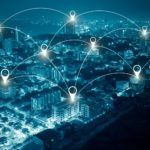SAVE ON ENERGY & STREAMLINE YOUR OPERATIONS
Sensors are small pieces of hardware which enable the “internet of things” by monitoring processes, collecting huge amounts of data and taking several measurements.
There are specific sensors for each IoT use case, depending on the requirements of the installation. There are sensors for measuring temperature, pressure and others to monitor the quality of the air or of waters. We will take a look at several different types of sensors and their corresponding use cases.
Featured Sensors:
22 examples of sensor use
1. Air – Sensors that detect the level of air pollution in urban areas to take appropriate measures that protect peoples health.
2. Athletes – Sensors that use an accelerometer and gyroscope are used to detect the severity of a hit to the head, which can be used by the coach to decide to pull athletes off the field to check for concussions.
3. Buildings – Sensors that monitor vibrations and material conditions in buildings, bridges and historical monuments provide ‘early warnings’ in case of damages.
4. Distribution vehicles – Sensors that detect the geographical location of each vehicle in a fleet are used to optimize routes and create accurate estimates for delivery times.
5. Energy usage – Sensors that monitor energy usage can be used to verify the energy efficiency of “green building” and gain insight in further improving this efficiency.
6. Green houses – Sensors that detect the micro-climate in terms of temperature, humidity and CO2 level are used to maximize the production of fruits and vegetables.
7. Gunshots – Sensors that detect the sound of a gunshot are used to pinpoint the location with an accuracy of 10 meters in real time and dispatch police to that location immediately.
8. Hazardous gases – Sensors that detect levels of explosive or toxic gases in industrial environments and indoor locations allow immediate action to secure the safety of people.
9. Health – Sensors that measure vital metrics such as blood pressure and heart rate, are used to monitor patients as they live their lives. The data is used to decide when the next visit to the doctor is necessary and to improve patient adherence to prescribed therapies.
10. Item location – Sensors that detect the geographical location of an object are used to track objects to save valuable time searching for them.
11. Machines – Sensors that monitor the state of machine parts, e.g. by measuring temperature, pressure, vibration and wear generate detailed data that can be used for condition based maintenance; applying maintenance when it is needed instead of in regular intervals independently from the status of the machine.
12. Noise – Sensors that monitor noise levels generated by entertainment venues in real-time allow rapid interventions when permissions are violated.
13. Parking spaces – Sensors that detect variations in magnetic fields generated by parked cars are used to detect whether a parking space is free. The information is used to guide people looking for a car space to the nearest free space.
14. Perimeter access – Sensors that detect people in non-authorized areas are more efficient than human security guards and can trigger immediate action on the right location.
15. Public lighting – Sensors that detect motion of people and vehicles in a street and adjust the public lighting to the required level.
16. Rivers – Sensors that detect river pollution e.g. caused by leakages of chemical plants in real-time allow for immediate actions that confine the damage to the environment.
17. Roads – Sensors that detect the temperature of a road to provide early warnings to drivers in case of slippery road due to e.g. ice.
18. Storage conditions – Sensors that monitor storage conditions of perishable goods such as vaccines and medicines measure temperature and humidity to secure the quality of products.
19. Storage incompatibility – Sensors that detect objects (e.g. dangerous goods) that are not allowed to be stored together. e.g. inflammable goods and explosives. Or in hospitals, the presence of blood for patient X in the operating room where patient Y is having surgery.
20. Traffic – Sensors that detect the speed and the number of vehicles using public roads are used to detect traffic congestion and suggest drivers to take an alternative route.
21. Waste – Sensors that detect to what extent a rubbish container is filled, to optimize the trash collection routes and to prevent trash being deposited on the street of a container is full.
22. Water – Sensors that detect water leakages in the water distribution network are used to align the maintenance schedule to the actual loss of water.
SOURCE: Smart Cities – A Deloitte Point of View, Version 1.0




